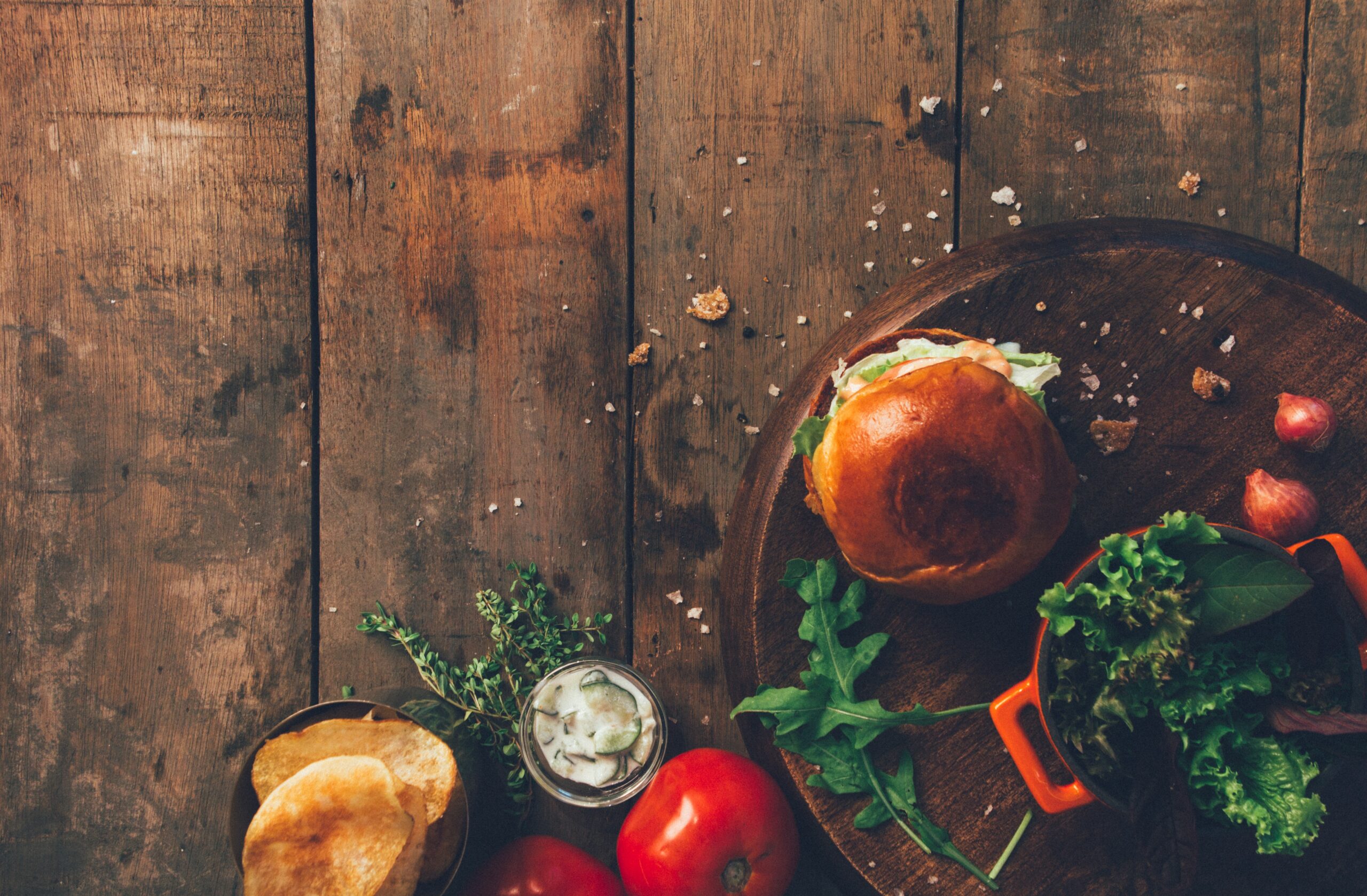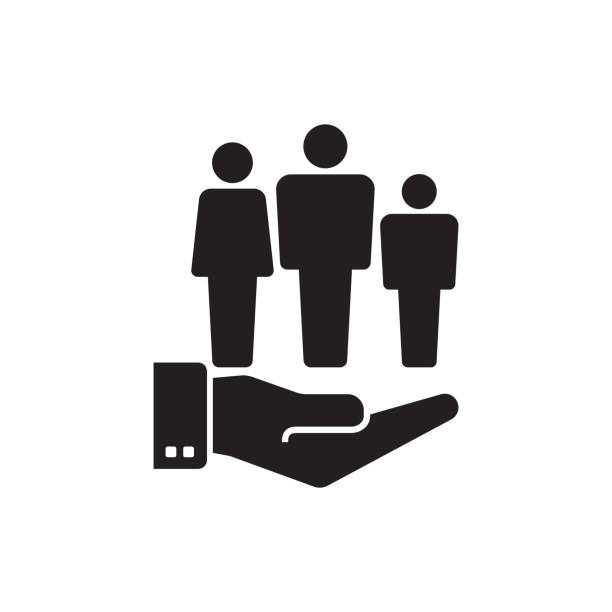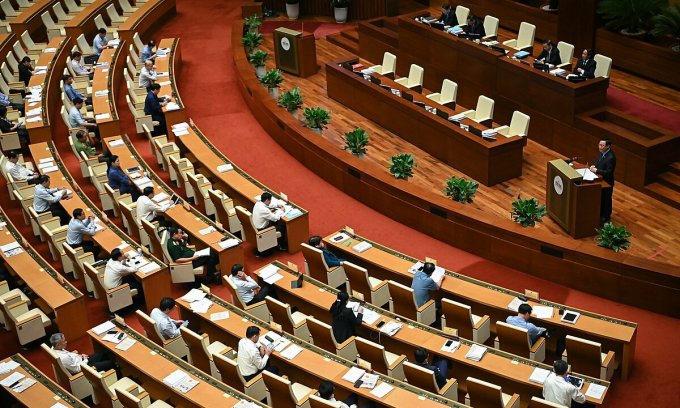Process of checking food safety and hygiene in Vietnam

Hi Lawyer, Can you tell me about the new food safety inspection process in 2022? I would like to thank you very much for answering my questions.
Thank you for sending us your question. To ensure food safety and hygiene at food production and business establishments; consumer food; on a monthly basis; or unexpectedly; Vietnamese competent authorities will conduct food safety and quality inspection nationwide. So according to the current law, how is the food safety inspection process in Vietnam regulated?
To be able to provide you with information about the food safety inspection process in Vietnam? LuatsuX invites you to refer to our article below.
Legal grounds
- Food Safety Law 2010
- Decree No. 115/2018/ND-CP
- Decree No. 124/2021/ND-CP
- Decree 67/2016/ND-CP
- Decree 155/2018/ND-CP
- Circular 48/2015/TT-BYT
- Joint Circular No. 13/2014/TTLT-BYT-BNNPTNT-BCT
What is food safety?
According to the provisions of Clause 1, Article 2 of the Law on Food Safety 2010, food safety is regulated as follows: Food safety is the assurance that food does not cause harm to human health and life.
According to the provisions of Article 3 of the Law on Food Safety 2010, the principles of food safety management are as follows:
Ensuring food safety is the responsibility of all organizations and individuals producing and trading food.
Food production and trading is a conditional operation; organizations and individuals producing and trading food must take responsibility for the safety of the food they produce and trade.
Food safety management must be based on corresponding technical regulations, regulations promulgated by competent state management agencies and standards announced and applied by production organizations and individuals.
Food safety management must be implemented throughout the process of food production and trading on the basis of risk analysis for food safety.
Food safety management must ensure clear assignment, decentralization and inter-sectoral coordination.
Food safety management must meet the requirements of socio-economic development.
Prohibited acts in the field of ensuring food safety and hygiene
According to the provisions of Article 5 of the Law on Food Safety 2010, the prohibited acts in the field of ensuring food safety and hygiene are as follows:
Using ingredients that are not food grade for food processing.
Using food materials that are past their expiry date, unknown origin or unsafe to produce and process food.
Using food additives, food processing aids beyond the expiry date, outside the list of permitted use or in the list of permitted use but exceeding the allowable limit; using chemicals of unknown origin, chemicals banned from use in food production and trading activities.
Using animals that have died from diseases, epidemics or died of unknown causes, destroyed for food production and trading.
- Manufacturing business:
Food that violates the provisions of the law on goods labels;
Food does not conform to the respective technical regulations;
Food is malformed;
Food containing harmful substances or contaminated with toxic substances, pollutant agents exceeding the allowable limit;
Food with unsafe packaging or containers or broken, torn or deformed during transportation, contaminating food;
Meat or meat-based products that have not been tested for veterinary use or that have passed inspection but fail to meet the requirements;
Food is not allowed to be produced or traded for disease prevention and control;
The food has not yet been registered with the regulation conformity announcement at the competent state agency in case such food is subject to the registration of the announcement of regulation conformity;
Food of unknown origin, origin or expiry date.
Using vehicles contaminating food, vehicles transporting toxic substances that have not been cleaned to transport food materials and food.
– Providing false or falsified food test results.
– Concealing, falsifying, erasing the scene, evidence of food safety incidents or other intentional acts that hinder the detection and remedy of food safety incidents.
Persons suffering from infectious diseases engaged in food production and trading.
Producing and trading food at establishments that do not have a certificate of satisfaction of food safety conditions as prescribed by law.
– Food advertising is not true, causing confusion for consumers.
Posting, publishing false information about food safety causing social irritation or damage to production and business.
– Illegally using roadbeds, sidewalks, corridors, common yards, common paths, common auxiliary areas for processing, production and trading of street food.
Principles of food safety inspection
According to the provisions of Article 3 of Circular 48/2015/TT-BYT stipulating the principles of food safety and hygiene inspection as follows:
– Firstly, to comply with the principles specified in Clause 4, Article 68 of the Law on Food Safety.
Objective, accurate, open, transparent, non-discriminatory;
Protecting the confidentiality of information, documents and inspection results related to agencies, organizations and individuals producing and trading in tested foods without official conclusions;
Not to harass or cause trouble to organizations and individuals producing and trading food;
Take responsibility before law for relevant examination results and conclusions.
– Second, there is no overlap in terms of subjects, locations and testing time. In case there is an overlap in the inspection plan of the lower food safety management agency and the inspection plan of the superior food safety management agency, between branches and levels, the overlap shall be handled. cross according to the principles specified in Clause 3, Article 5 of Joint Circular No. 13/2014/TTLT-BYT-BNNPTNT-BCT.
If the inspection and examination plan of the inferior agency coincides with the inspection and examination plan of the superior agency, the inspection plan of the superior agency shall be followed;
If the inspection and examination plans of agencies of the same level overlap with each other in terms of geographical areas and establishments, the parties shall discuss and agree on the establishment of an interdisciplinary team.
How many types of food safety inspection are there?
According to the provisions of Circular 48/2015/TT-BYT, there are currently 02 types of food safety and hygiene inspection, which are planned inspection and unexpected inspection.
According to the provisions of Article 7 of Circular 48/2015/TT-BYT, regulations on planned inspection are as follows:
- Develop test plan:
Annually, the competent authority shall inspect the basis of management requirements, the evolution of product and goods quality, assess the compliance with the provisions of the law on food safety; results of inspection and examination of the previous period; the funding situation and the direction of the superior management agency to develop the inspection plan according to the provisions of Point a, Clause 2, Article 69 of the Law on Food Safety.
The time for completing the formulation of the annual inspection plan is as follows: Before November 1 for the commune level, before November 15 for the district level, before December 1 for the provincial level, and before December 15. to the Food Safety Authority. The inspection plan is made according to the form specified in Appendix 01 issued together with Circular 48/2015/TT-BYT.
- Notice of pre-inspection: Before conducting the inspection, the inspection agency must notify the inspected establishment at least 01 day, except for the inspected subjects who are food business establishments that are not required to register for inspection. business sign, street food business person.
- Frequency check:
For food service and street food business establishments, the provisions of Article 9 of Circular No. 30/2012/TT-BYT dated December 5, 2012 of the Minister of Health on regulations on food safety conditions for food service and street food business establishments.
For food production and trading establishments under the management of the Ministry of Health, the provisions of Article 14 of Circular No. 16/2012/TT-BYT dated October 22, 2012 of the Minister of Health shall be complied with. regulations on food safety conditions for establishments producing and trading food, tools, packaging materials and food containers under the management of the Ministry of Health.
According to the provisions of Article 8 of Circular 48/2015/TT-BYT, the unexpected inspection is as follows:
The agency competent to inspect food safety shall conduct surprise inspection in the following cases:
When there are signs of food safety violations, food safety incidents; peak inspections and food safety management requirements under the direction of superior agencies;
When there are warnings of domestic and foreign organizations and international organizations related to food safety;
According to the reflection of organizations and individuals involved in food safety.
- The inspection agency is not required to notify the inspection in advance to food production and trading establishments; food service establishments, street food businesses.
New food safety inspection process
According to Article 5 of Circular 48/2015/TT-BYT, the grounds for inspection are as follows:
– National technical regulations for food products; provisions of the law on food safety for production and trading of food and food products.
Standards related to food safety announced by producing organizations and individuals apply to the production and trading of food and food products.
- Regulations on food safety conditions for food production and trading establishments; food service establishments, street food businesses.
- Regulations on advertising and labeling of food.
- Regulations on food testing.
- Other provisions of the law on food safety.
According to the provisions of Article 6 of Circular 48/2015/TT-BYT, the inspection contents are as follows:
For food production and trading establishments:
Administrative and legal documents of the establishment: Certificate of business registration, Certificate of eligibility for food safety, Certificate of knowledge of food safety, Certificate of full health of the establishment owner and of the person directly producing and trading food; Certificate of ISO, HACCP (Hazard Analysis and Critical Control Point) and equivalent;
Dossier for Receipt of regulation conformity announcement/Certificate of publication of conformity with food safety regulations, Certificate of advertisement contents;
Dossiers, documents and compliance of the establishment owner on facility conditions, equipment and tools; people directly producing and trading food; production and processing processes; transporting and preserving food; origin, origin, expiry date of raw materials, additives and finished food products; other regulations related to establishments producing and trading food and food products;
Contents of food product labeling:
The implementation of periodic product testing;
The implementation of regulations on food advertising (for establishments that advertise food);
Checking documents related to the state inspection of food safety for imported food (for establishments importing and trading imported food);
Take samples for testing in case of need. The collection of samples for testing shall comply with the provisions of Circular No. 14/2011/TT-BYT dated April 1, 2011 of the Minister of Health, providing general guidance on food sampling serving inspection and quality control. , hygiene and food safety.
- For food service establishments, street food business:
Check the establishment’s administrative and legal records: Certificate of business registration, Certificate of establishment meeting food safety conditions (for establishments subject to issuance of certificates), Certificate of knowledge about food safety. food safety. Certificate of full health of the establishment owner and of the person directly producing and trading food;
Check records and documents and comply with the establishment’s owner’s conditions, equipment and tools; people directly producing and trading food; production and processing processes; food safety practices of employees; transporting and preserving food; water source; origin of food and raw materials used for food production and processing; save templates; other relevant regulations;
Take samples of food and food ingredients for testing in case of necessity.
According to the provisions of Article 9 of Circular 48/2015/TT-BYT, the inspection order is as follows:
– Issuance of inspection decisions: The head of the agency competent to inspect food safety shall issue an inspection decision including the following contents: Location and scope of inspection, inspection form (inspection according to plan). planned or unscheduled), inspection period, inspection duration; composition of the inspection team and the tasks of the inspection team. The inspection decision is made according to the form specified in Appendix 02 issued together with Circular 48/2015/TT-BYT.
The inspection team shall conduct the inspection in the following order:
Announce the inspection decision to the inspected object;
Conduct inspection according to the contents specified in Article 6 of Circular 48/2015/TT-BYT;
Making inspection records: The minutes of food safety inspection for food production and trading establishments shall be made according to the form specified in Appendix 03 issued together with Circular 48/2015/TT-BYT; Minutes of food safety inspection for food service establishments shall be made according to the form specified in Appendix 04 issued with this Circular; The minutes of food safety inspection for street food business establishments shall be made according to the form specified in Appendix 05 issued with this Circular.
Report inspection results as prescribed in Article 11 of Circular 48/2015/TT-BYT.
Issue a decision to handle the inspection results as prescribed in Article 10 of Circular 48/2015/TT-BYT.
According to the provisions of Article 10 of Circular 48/2015/TT-BYT, regulations on handling of inspection results are as follows:
Handling of violations during food safety inspection as prescribed at Point c, Clause 1, Article 69 of the Law on Food Safety. Some specific cases are as follows:
- In case of violation of regulations on labeling of goods or goods whose sample test results are inconsistent with the criteria announced in the detailed product information sheet or the criteria stated on the product label enclosed with the dossier. If the announcement is issued by a competent authority, the receipt of the announcement of regulation conformity or the Certificate of publication of conformity with food safety regulations shall be handled according to the provisions of the law on recall and handling of food products. fail to ensure safety under the management of the Ministry of Health.
- In the course of inspection, if it is found that violating organizations or individuals must be administratively handled, depending on the nature and seriousness of violations, the following documents shall be applied to sanction administrative violations:
Violations against regulations on conditions to ensure food safety, on periodical testing of products handled in accordance with the provisions of Decree No. 178/2013/ND-CP dated November 14, 2013 of the Government stipulating sanctioning administrative violations on food safety (hereinafter referred to as Decree 178/2013/ND-CP).
Violations against regulations on regulation conformity announcement or announcement of conformity with food safety regulations for food products; goods whose sample test results do not conform to the criteria announced in the detailed information sheet of the product or the criteria stated on the product label or do not conform to the announced applicable criteria or the standards National technical regulations or food safety regulations to handle violations according to the provisions of Decree No. 80/2013/ND-CP dated July 19, 2013 of the Government on sanctioning of administrative violations in the field of standards, measurement and quality of products and goods (hereinafter referred to as Decree No. 80/2013/ND-CP) or Decree No. 178/2013/ND-CP.
Violations against regulations on the labeling of goods shall be handled according to the provisions of Decree No. 80/2013/ND-CP.
Violations against regulations on food advertising shall be handled according to the provisions of Decree No. 158/2013/ND-CP dated November 12, 2013 of the Government on sanctioning of administrative violations in the field of culture, sports, tourism and advertising.
Violations against regulations in commercial activities, production and trading of fake and banned foods shall be handled according to the provisions of Decree No. 185/2013/ND-CP dated November 15, 2013 of the Government. regulations on sanctioning of administrative violations in commercial activities, production and trading of counterfeit and banned goods and protection of consumers’ interests.
In case of exceeding the competence, the dossier shall be transferred to a higher level for processing or transferred to the investigating agency for verification and handling according to the provisions of law.
According to the provisions of Article 11 of Circular 48/2015/TT-BYT, the report on inspection results is as follows:
Within no more than 15 working days from the date of completion of the inspection. The head of the inspection team is responsible for reporting in writing the inspection results to the head of the inspection decision-making agency according to the contents specified in Appendix 06 issued together with Circular 48/2015/TT-BYT.
Please see more
- Make a license for food hygiene and safety by the Vietnam law
- Service of setting up a seafood production company in Vietnam
Services of LawyerX
Prestigious professional services: Firstly, the team of consultants and consultants for many years in the field of civil status, and customer support.
On-time: Certainly, with the motto “Get your lawyer right at your fingertips”, we ensure the service always performs on time. The rights and interests of customers always come first.
Cost: Besides, Lawyer X’s service costs are highly competitive; depending on the nature of the particular case. So, we want our guests to have the best possible service experience. Therefore, costs which guaranteed to be the most suitable and economical for customers.
Confidentiality of client information: Finally, all brand information of client Lawyer X will be 100% confidential.
Please contact us immediately if you have any questions about “Process of checking food safety and hygiene in Vietnam”
Contact LSX Lawfirm
Finally, we hope this article is useful for answering the question about: “Process of checking food safety and hygiene in Vietnam”. If you need any further information, please contact LSX Law firm: +84846175333 or Email: [email protected]
Frequently asked questions
– The food safety management agency under the branch-managing ministry shall inspect food safety in food production and trading according to the provisions of Articles 61, 62, 63 and 64 of this Law.
The food safety management agency under the provincial People’s Committee shall carry out the food safety inspection in the locality according to the regulations of the line ministry and the assignment of the provincial People’s Committee.
-In the case of an interdisciplinary inspection of food safety related to the management scope of many branches or localities, the agency in charge of conducting the inspection is responsible for coordinating with relevant agencies of the ministries, relevant ministerial-level agencies and provincial-level People’s Committees for implementation.
– The Minister in charge of industry management shall specify food safety inspection activities within the scope of his/her assigned state management.
Within the scope of their duties and powers, the food safety management agency has the following rights in food safety inspection:
a) Decide on the establishment of an inspection team to carry out planned or unexpected inspection;
b) Warning about the risk of not ensuring food safety;
c) Handle violations during food safety inspection as prescribed in Articles 30, 36 and 40 of the Law on Product and Goods Quality;
d) Settle complaints and denunciations about decisions of the inspection team and the behavior of members of the inspection team in accordance with the law on complaints and denunciations.
– Within the scope of their tasks and powers, the food safety management agency has the following tasks:
a) Formulate an annual inspection plan and submit it to competent state agencies for decision;
b) Receive registration dossiers for imported food safety inspection; certification of food safety assurance conditions for imported food;
c) Issue a decision on handling within 03 working days from the date of receipt of the inspection team’s report on the temporary suspension of production and business activities, food sealing, suspension of advertising, etc. Reporting for unsafe food.
Conclusion: So the above is Process of checking food safety and hygiene in Vietnam. Hopefully with this article can help you in life, please always follow and read our good articles on the website: lsxlawfirm.com




